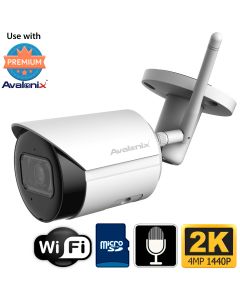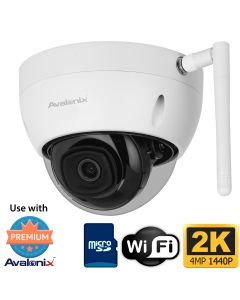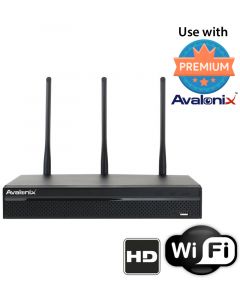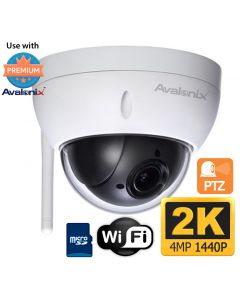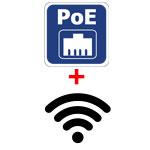
When you buy a surveillance camera system, one of the many things to think about is whether you want wireless or wired security cameras. Fortunately, there is a solution that asks, "Why not both?" CCTV Camera World sells recorders and cameras that can work together to create a hybrid security camera system that can accommodate both wired and wireless security cameras
A hybrid security system is the best of both worlds. It combines the ease of use of wireless cameras with the powerful features and high reliability of wired cameras. We sell professional products, so our WiFi security cameras require power adapters. We do not believe that battery or solar-powered home consumer grade equipment satisfies the high-quality standards required for a professional surveillance system. If you're interested in a pre-configured hybrid system, you can get a customized quote by contacting us using our contact form.
What is a Hybrid Wireless and Wired Security Camera System?
A hybrid wireless and wired camera system lets you use both wireless WiFi and wired IP cameras on the same recorder. Wireless cameras are convenient because they can be set up anywhere within the range of a WiFi network or WiFi NVR and only need a 12V DC power adaptor to power the cameras. Most of the time, wired PoE cameras have more features such as AI enabled Smart Detection, and have a longer lifespan.
A security camera system for a home, small office, or small business can be fully customized with a hybrid camera set-up.
Two Types of Hybrid Systems
There are two different kinds of hybrid surveillance systems available, which we will refer to as type A and type B. A wireless NVR is used in type A. A wired NVR is used in type B. For either system, wireless cameras need 12V DC power, and wired cameras connect using CAT5e or CAT6 Ethernet cables.
Type A - Wireless NVR
A WiFi NVR serves as the system's heart and brain in the type A system. After turning on, wireless cameras connect by automatically pairing with the built-in WiFi network of the NVR. WiFi cameras must be within 250ft (unobstructed line of sight) of the NVR and have few obstructions in order to function properly. Wired cameras in the type A system are connected to a Power over Ethernet (PoE) switch using an Ethernet network cable. The PoE switch can be directly connected to the WiFi NVR or networked with a router.
We encourage using a router to set up a local network. The WiFi NVR connects to the wired cameras over the local network. It's worth noting that the router doesn't require an internet connection, and the system can function as a stand-alone surveillance system. An internet connection is only necessary if remote viewing is required.
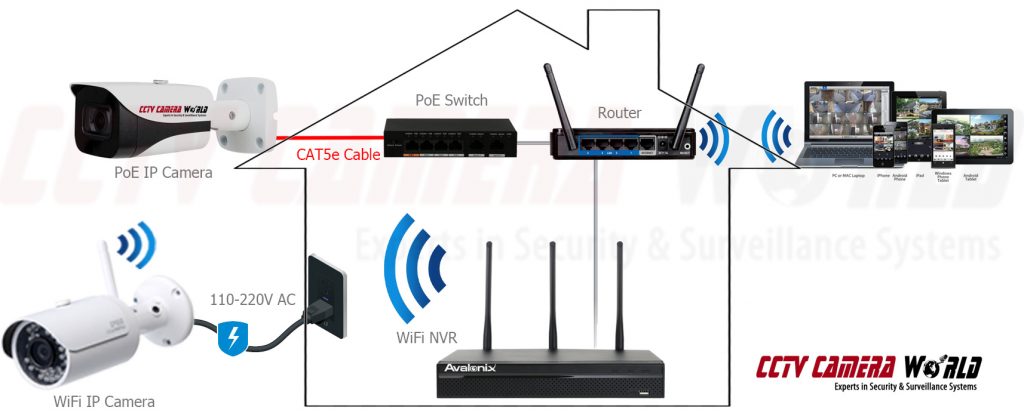
Equipment needed
Type B - Wired PoE NVR
In a type B system, a wired PoE NVR is used along with a router that provides the WiFi network for the wireless cameras to connect to. With the built-in PoE switch on the NVR, the wired IP cameras can connect directly to the NVR over Ethernet cables. The NVR will automatically connect to any wired cameras that are connected to its PoE switch.
The wireless cameras are paired manually to the router's WiFi network. In order to pair the WiFi camera to the router’s wireless network, you must first turn it on and connect it via Ethernet to the router. After the wireless camera is paired with the router, the camera can be mounted anywhere within range of the WiFi network.
The Type B system can also be used with or without an internet connection. An internet connection is only necessary for the remote viewing app to work.
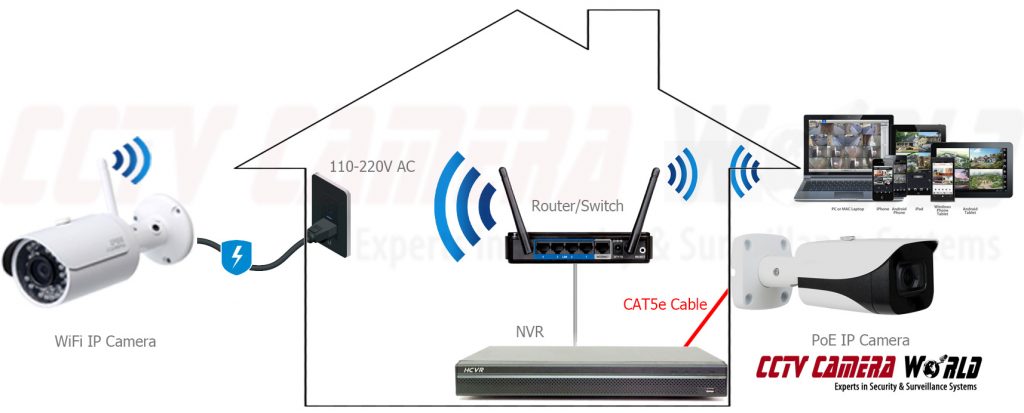
Equipment needed
How to Set Up a Hybrid Security Camera System?
As mentioned above, at the heart of each system is a different type of NVR recorder, which ultimately dictates how each type is set up. In the sections that follow, we'll show you how to install each type, step-by-step, with the help of an instructional video.
Important: Before installing either system, we recommend bench testing the equipment to get a better understanding of how the system is installed and works together.
Type A: Wireless NVR with a PoE switch and router
- Power the Wireless NVR on and connect a monitor or TV and the mouse.
- Power the WiFi cameras on.
- The WiFi cameras should automatically pair with the WiFi NVR - If the cameras do not pair within 5 minutes, right click to access the main menu and left click the “Wireless Pairing” option. Wait a minute for the NVR and cameras to pair.
- Connect the wireless NVR to the router using an Ethernet cable.
- Connect the PoE switch to the router using the PoE switch's non-PoE ports (AKA uplink ports).
- Connect the wired PoE cameras to the PoE switch. If you didn't buy a system that was already configured, you will have to set up the cameras for the router's local network manually.
- Add the wired cameras to the NVR’s Camera List page by using the automatic “Add” button after a “Device Search”.Or use the “Manual Add'' button and manually enter the password and IP addresses set on the cameras. The camera-adding process is shown in our tutorial video here.
- After the cameras are connected and showing video, visit our Security Camera System Guide to learn more about using and configuring the NVR.
Type B: Wired NVR with a WiFi router
- Power the NVR on and connect a monitor or TV and a mouse.
- Connect the wired PoE IP cameras directly to the PoE ports on the back of the NVR.
- Wait about 2-3 minutes for the wired IP cameras to finish booting up and connect to the NVR.
- Connect the NVR to the router.
- The WiFi cameras must be manually configured and paired one at a time to the router’s WiFi network. After they are paired, they can be deployed wirelessly without a network cable.
- Power a WiFi camera using the 12V DC power adapter.
- Connect it to the router using an Ethernet cable.
- Access the camera’s web interface via its wired IP address found on the camera’s box label.
- Navigate to the camera’s Network>WiFi settings.
- Double click the router's WiFi network name after doing a search and then enter the WiFi password.
- Navigate to the camera’s Network>TCP/IP page and set an IP address for the camera’s WiFi network.
- A full guide on this process with video tutorials can be found in our How to use Wireless Security Cameras with a WiFi Router article.
Note: If you purchase a pre-configured system with a router, we will do this for you.
- After pairing the cameras with the WiFi network and configuring an IP address for them you can now add them to the NVR using the “Add” button after a “Device Search” in the Camera List page.
Or the cameras can be manually added using the “Manual Add” button using the IP address you configured. The camera-adding process is shown in our "Adding IP Cameras" guide.
Should I buy a Hybrid Camera System?
The decision to purchase a hybrid surveillance camera system is influenced by how you want it to perform, what features you want, and how you want to set it up. We suggest that you buy as many wired cameras as you can and only use wireless cameras where you can't run cables.
Wireless cameras are limited in the number of cameras that may be used (up to 8), do not have AI smart detection, and can only deliver video in 4MP 2K resolution. Wired cameras do not have throughput limitations associated with wireless technology, offer powerful smart security camera functions, and you can use ultra high definition cameras such as 12MP or 4K security cameras. Our professional 4K security cameras provide facial detail up to 80ft, which is beyond the 40ft limitation of 4MP or 2K wifi security cameras.
This is not to argue that wireless cameras should never be purchased. They are beneficial in situations where running cable is difficult but there is power already present. They're also useful in situations where you don't need Smart Detection or facial detail beyond 40ft.

